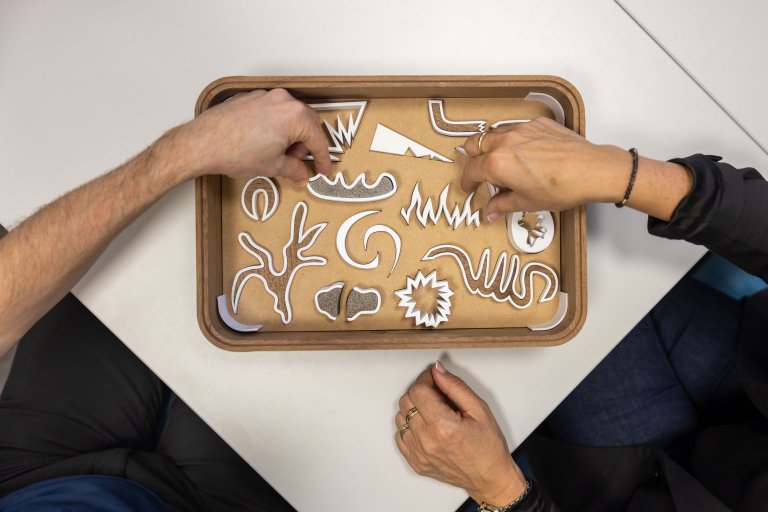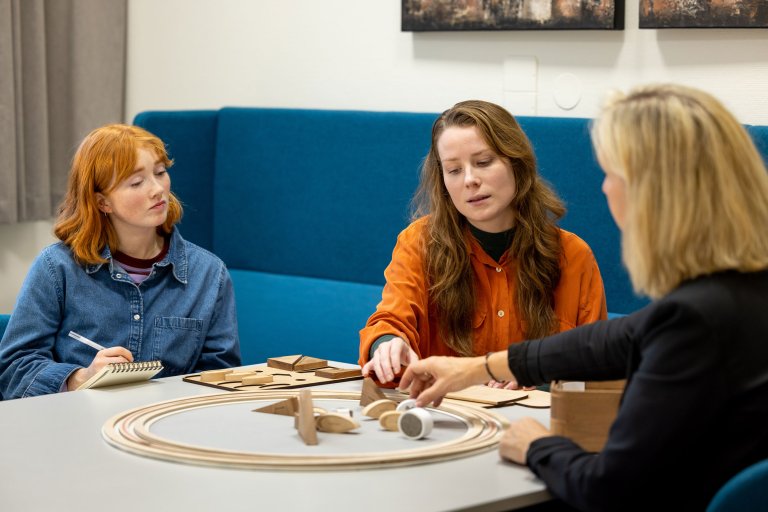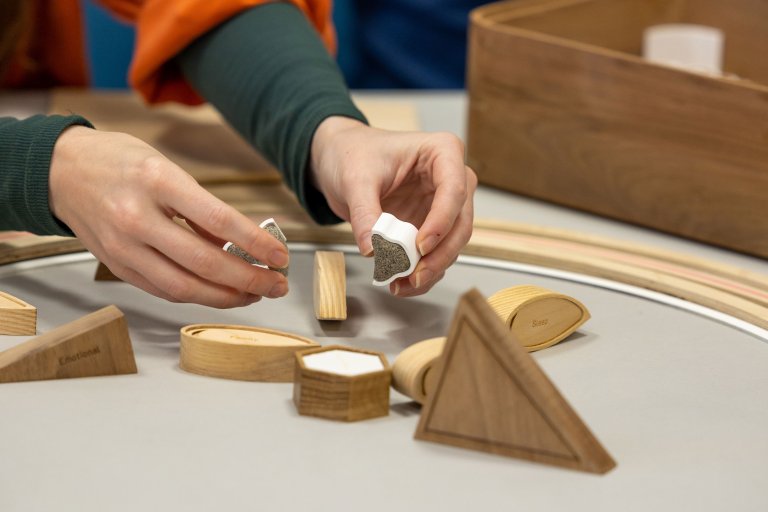Photo: Silje Katrine Robinson, DOGA and Eivind Senneset, Neuro-SysMed
This is the second award Van den Hooven receives for her work on designing tools to express pain. Last year she also received the DOGA newcomer award. In 2019 she came from Canada to Bergen, where she created her own pain laboratory, Open Pain Lab. To the pain lab she invited people with pain experiences and professionals in medical science and healthcare to interviews and workshops.
– Words are often not enough when people have to describe both physical and emotional pain. In contrast, there are many who manage to express themselves with the help of tactile and visual things. This led me to design an interactive toolbox full of objects that help people articulate the pain they experience, she says.
What does pain look like?
The Canadian designer explains that the design process on communicating pain began by holding workshops where she asked participants to mould their pain in clay.
–This is where I first learned the power that objects have in bridging the communication gap. The unique forms helped people express what they couldn’t with words alone, Amy Van den Hooven says.
It was during Van den Hoovens master's at the Department of Design at The University of Bergen that her project started.
– In my project Re–Imagining Pain Communication, I wanted to see how design can help improve the way we communicate pain. The DOGA–award, and international recognition, is of course a bonus, but it is not about the prizes. I am very passionate about this work. To be recognized internationally is confirmation that pain and suffering are aspects of life that we need to better understand. Signs that show how important this work is, are the opioid epidemic, escalating mental health issues and the increase in chronic disease, the designer says.



